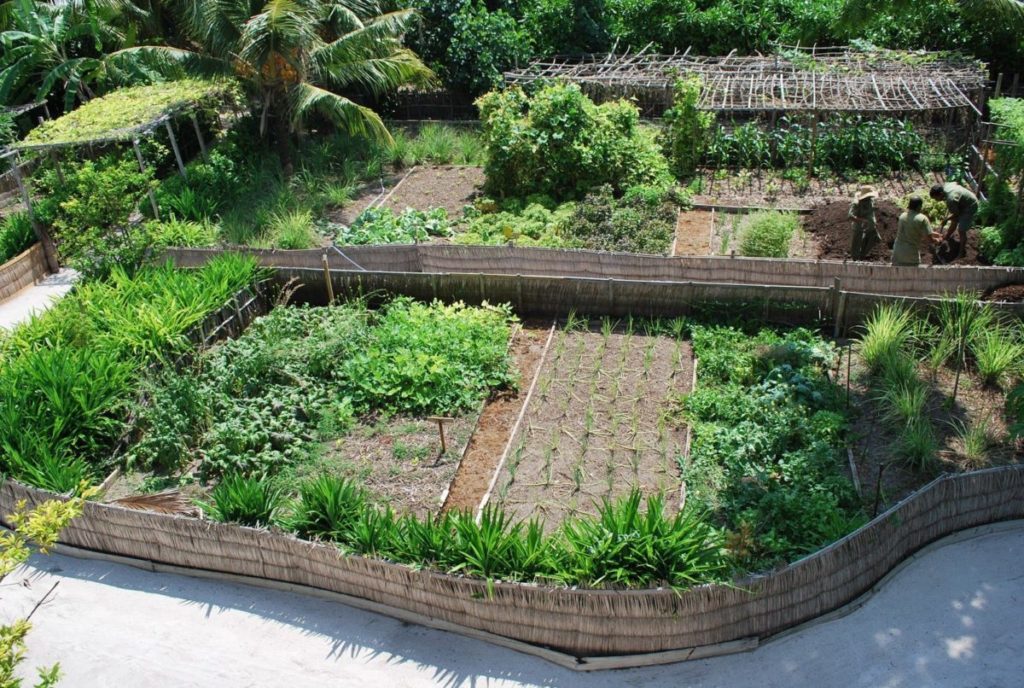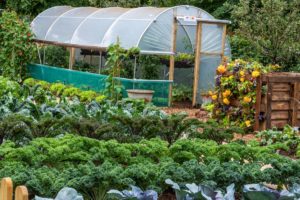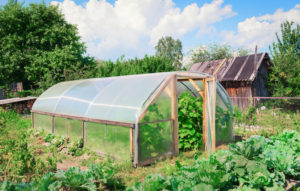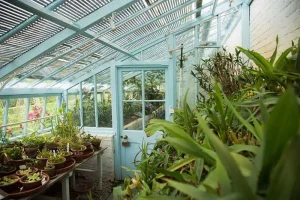Start creating your own sustainable oasis right in your backyard by incorporating permaculture principles into your urban garden!
Permaculture is an eco-friendly approach to growing plants that not only helps reduce waste, but also makes gardening easier and more productive.
With just a few simple changes, such as using raised beds and compost piles instead of chemical fertilizers, selecting the right plants for your climate zone, and incorporating pollinator-friendly flowers, you can bring harmony to your yard while also growing delicious fruits and vegetables all year round.
Let’s get started!
Observe and Interact
Take the time to observe your garden and the life that exists within it. Notice the patterns of nature, the relationships between plants and animals, and the microclimates that exist within your space. Use this knowledge to make informed decisions about how to design and manage your garden.
As you step into your garden, take a moment to observe and interact with the vibrant ecosystem that surrounds you.
Look closely at the patterns of nature, the relationships between plants and animals, and the microclimates that exist within your space.
By doing so, you’ll gain invaluable insights into how to design and manage your garden for optimal growth and health.
Start by noticing the diversity of plant species that call your garden home.
Observe how they grow, flower, and fruit, and how they interact with one another.
Do certain plants attract beneficial insects or repel pests?
Do others provide shade or structure for the garden’s microclimate?
As you observe these patterns, you’ll begin to see how each plant contributes to the overall health and beauty of your garden.
Next, turn your attention to the animals that inhabit your garden.
Watch as they forage for food, build nests, and interact with one another.
Do you notice any signs of stress or disease?
By paying attention to these subtle cues, you can take preventative measures to ensure the well-being of your garden’s inhabitants.
As you continue to observe and interact with your garden, you’ll begin to notice microclimates within your space.
These microclimates can be as small as a single plant or as large as a section of your garden.
By understanding the unique conditions of each microclimate, you can tailor your gardening approach to meet the specific needs of each area.
The more you observe and interact with your garden, the more you’ll learn about the intricate web of life that exists within it.
By using this knowledge to inform your gardening decisions, you’ll be well on your way to creating a thriving, vibrant space that supports the health and beauty of all its inhabitants.]]]
Observe and Interact: Unlocking the Secrets of Your Garden Ecosystem
As a gardener, one of the most powerful tools at your disposal is the ability to observe and interact with your garden ecosystem.
By taking the time to observe your garden and the life that exists within it, you can gain a deeper understanding of the intricate web of relationships between plants and animals.
This knowledge will allow you to make more informed decisions about how to care for your garden, leading to a more thriving and vibrant space.
To start, take a close look at the plants in your garden.
Notice the patterns of growth, the way they interact with one another, and the subtle changes that occur over time.
Observe the relationships between plants and animals, and how each plant contributes to the overall ecosystem.
For example, certain plants may attract beneficial insects or provide shelter for small animals.
By understanding these relationships, you can make more targeted decisions about how to care for your garden, such as incorporating beneficial insects or providing shelter for wildlife.
In addition to observing the plants, pay attention to the micro decisions that occur within your garden.
Notice how the light, water, and nutrients are used by the plants, and how these resources affect their growth and health.
By understanding these micro decisions, you can make adjustments to your gardening routine to better support the needs of your plants.
For example, you may need to adjust the amount of water or nutrients you provide, or change the timing of your gardening tasks to better align with the needs of your plants.
By observing and interacting with your garden ecosystem, you’ll be well on your way to creating a thriving, vibrant space that supports both the plants and animals that call it home.]
Observe and Interact: The Key to a Thriving Garden Ecosystem
To create a thriving and vibrant garden ecosystem, it is essential to observe and interact with your garden.
This involves taking the time to study the relationships between plants and animals, and understanding the patterns of nature.
By doing so, you can make targeted decisions to support the needs of your plants, such as incorporating beneficial insects or providing shelter for wildlife.
One of the key micro decisions that occurs within your garden is the use of light, water, and nutrients by the plants.
By paying attention to these factors, you can adjust your gardening routine to better support the needs of your plants.
For example, you may need to adjust the amount of water or nutrients you provide, or change the timing of your gardening tasks to better align with the needs of your plants.
Observing and interacting with your garden also helps you understand the relationships between plants and animals.
You may notice that certain plants attract beneficial insects, or that certain animals help control pests.
By paying attention to these relationships, you can make intentional decisions to support the well-being of all living things in your garden, creating a more balanced and harmonious ecosystem.
By regularly observing and interacting with your garden, you will develop a deeper understanding of its needs and patterns.
This will enable you to make better decisions to support its well-being, and to create a thriving and vibrant garden ecosystem.
So, take the time to observe and interact with your garden – it will be well worth the effort!]
Create a Diverse and Inclusive System
Incorporate a variety of plants and animals into your garden. This will create a more resilient and robust ecosystem, and will also provide a diversity of produce and beauty.
By including a wide range of plants and animals in your garden, you will not only create a more resilient and robust ecosystem, but you will also reap a bounty of fresh produce and enjoy aesthetic beauty.
Different plants have unique properties and requirements, and by incorporating a variety of them into your garden, you can create a more self-sustaining and adaptable system.
For example, incorporating native plants into your garden can help support local pollinators and beneficial insects, while also improving soil health and reducing the need for fertilizers and pesticides.
Similarly, incorporating animals such as bees, butterflies, and birds into your garden can provide valuable ecological services such as pollination and pest control, while also adding beauty and interest to your outdoor space.
By embracing diversity and inclusivity in your garden, you can create a thriving and vibrant ecosystem that provides numerous benefits for both humans and the environment.
Use Edible and Medicinal Plants
Grow edible and medicinal plants in your garden, and use them regularly. This will not only provide you with healthy and nutritious food, but will also help to strengthen the resilience of your garden.
Growing edible and medicinal plants in your garden is an excellent way to boost the resilience of your food system.
Not only will these plants provide you with healthy and nutritious food, but they will also contribute to the overall health and well-being of your garden.
By incorporating a diversity of edible and medicinal plants into your garden, you can create a thriving ecosystem that is better able to withstand pests, diseases, and other challenges.
For example, certain plants like basil and garlic have natural pest-repelling properties, while others like mint and lemon balm have antimicrobial properties that can help to prevent the spread of disease.
Many edible and medicinal plants are rich in vitamins, minerals, and antioxidants, which can help to strengthen your immune system and overall health.
By regularly using these plants in your cooking and herbal remedies, you can reap a multitude of health benefits while also fostering a more resilient and sustainable garden.
Design for Multifunctionality
Incorporate multifunctional elements into your garden, such as fruit trees that also provide shade, or vegetables that also attract beneficial insects. This will increase the functionality and productivity of your garden.
Incorporating multifunctional elements into your garden design can significantly enhance its productivity and functionality.
Consider incorporating fruit trees that not only provide delicious fruit but also offer shade for your vegetables, or vegetables that attract beneficial insects, such as beans or flower clusters.
This multifaceted approach will not only increase the yield of your garden but also provide a more diverse and resilient ecosystem.
For example, planting a comfrey plant, which acts as a natural fertilizer, alongside your vegetables can provide a nutrient-rich soil amendment, while also attracting beneficial insects.
By choosing multifunctional elements, you can create a more efficient and productive garden that thrives for years to come.
These multifunctional plants will also provide aesthetic value, creating a beautiful and bountiful garden that feeds both your body and your soul.
Use Perennials
Perennial plants have a longer lifespan than annuals, and require less maintenance. Incorporate perennials into your garden, such as berry bushes or asparagus, to create a more sustainable and low-maintenance ecosystem.
Perennial plants are a great choice for gardeners looking to create a sustainable and low-maintenance ecosystem.
Unlike annuals, which only last for a single growing season, perennials can thrive for many years, often living for five to ten years or more.
This means that you’ll have to spend less time and effort on maintenance, as you won’t need to replant your flowers or vegetables every year.
Perennials tend to be more drought-tolerant and can withstand extreme weather conditions, making them a great choice for areas with unpredictable climate patterns.
To incorporate perennials into your garden, consider planting berry bushes or asparagus.
Berry bushes like blueberries, raspberries, and blackberries are not only delicious, but they also require minimal care and can thrive for many years.
Asparagus, on the other hand, is a versatile perennial that can be used in a variety of dishes, from soups to salads.
It’s also relatively easy to care for, requiring only occasional watering and fertilization.
Overall, incorporating perennials into your garden can help you create a more sustainable and low-maintenance ecosystem.
With their long lifespan and ability to withstand harsh weather conditions, perennials are a great choice for gardeners looking to reduce their maintenance efforts while still enjoying a bountiful harvest.
Build Soil Health
Healthy soil is the foundation of a successful garden. Use techniques such as no-dig gardening, mulching, and incorporating compost to build and maintain soil health.
Healthy soil is the foundation of a successful garden, and it’s essential to invest time and effort in building and maintaining soil health.
No-dig gardening, mulching, and incorporating compost are all effective techniques for improving soil health.
No-dig gardening avoids tilling the soil, which can damage the delicate ecosystem of microorganisms and macro-organisms living in the soil.
Instead, use a shallow cultivator or a broadfork to loosen the soil without disturbing its structure.
Mulching helps retain moisture, suppress weeds, and regulate soil temperature, all of which contribute to a healthy and productive garden.
Adding compost to the soil not only enriches its fertility but also helps to improve its structure, making it easier for roots to grow and absorb nutrients.
By implementing these techniques, gardeners can build and maintain healthy soil that supports a thriving ecosystem and maximizes plant growth.
Use Rainwater Harvesting
Collect and store rainwater in your garden to use for irrigation and other purposes. This will not only save water, but will also help to mitigate the urban heat island effect.
By implementing rainwater harvesting in your garden, you can significantly reduce your water consumption while also mitigating the urban heat island effect.
Rainwater collection systems allow you to collect and store rainwater for use in irrigation and other purposes, such as filling a pool or washing your car.
This not only saves water, but it also reduces the amount of stormwater runoff that enters the local waterways, helping to protect our environment.
In addition, using rainwater instead of potable water for irrigation can help to reduce the amount of energy used to treat and pump water, further reducing your carbon footprint.
Plus, by using rainwater, you’re providing your plants with a natural source of water that’s rich in nutrients and beneficial microorganisms, promoting healthy growth and development.
So, not only is rainwater harvesting good for the environment, but it’s also a smart choice for your garden’s health and sustainability.
Create a Productive Ecosystem
Design your garden to be a productive ecosystem, where everything has a purpose and is used to its fullest potential. This will not only increase the functionality and productivity of your garden, but will also help to reduce waste and increase the overall health of the ecosystem.
By designing your garden to be a productive ecosystem, you can unlock the full potential of your outdoor space and create a thriving oasis that not only looks beautiful, but also produces fresh, healthy produce and reduces waste.
Consider incorporating a variety of plants, including vegetables, fruits, herbs, and flowers, to create a diverse and resilient ecosystem.
Strategically place compost piles, rain barrels, and trellises to optimize space and reduce waste.
Use efficient irrigation systems and incorporate permaculture techniques to create a self-sustaining ecosystem that requires minimal inputs and produces maximum yields.
By doing so, you’ll not only enhance the functionality and productivity of your garden, but also foster a healthier and more balanced ecosystem that benefits both humans and wildlife alike.
Want More? Dive Deeper Here!
Hey there! If you’re the type who loves going down the rabbit hole of information (like we do), you’re in the right spot. We’ve pulled together some cool reads and resources that dive a bit deeper into the stuff we chat about on our site. Whether you’re just killing time or super into the topic, these picks might just be what you’re looking for. Happy reading!






